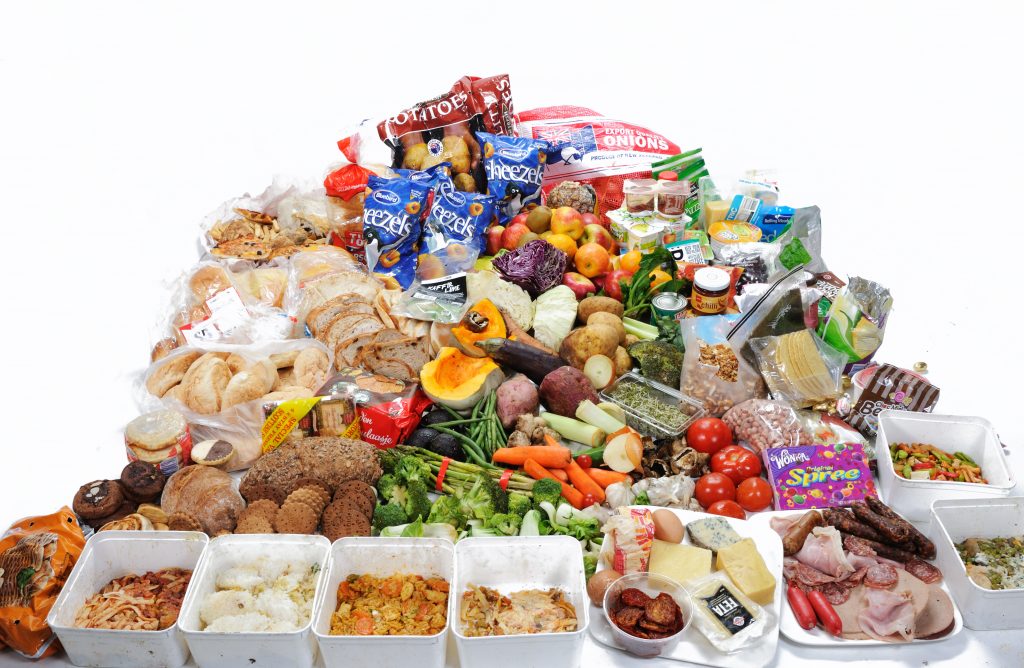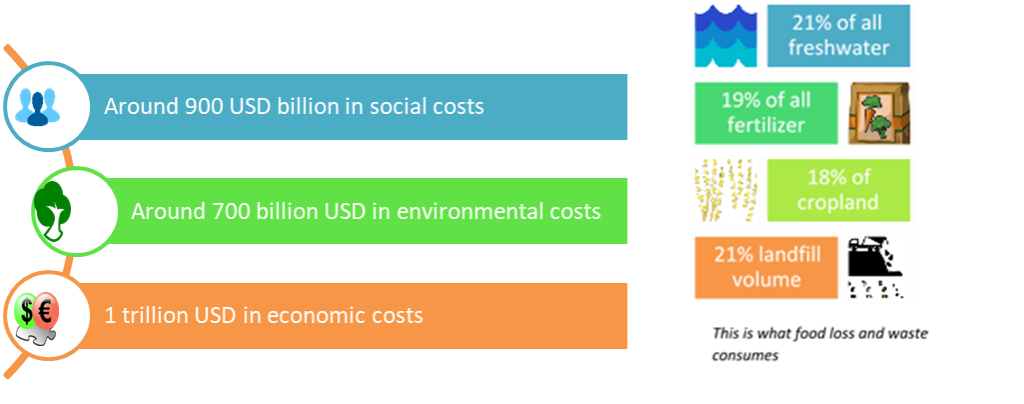Author: Francesco Dato, PHRi, Senior Consultant at CARRHURE Green Human Resources Management is a…
Food Waste: A Problem That Shouldn’t Exist, but it Does: How Our Way of Life Can Help Deal with It.
Photo from Wikipedia Commons
Food (including water) is one of human being’s basic needs. We need to consume food to acquire the necessary nutrients that our bodies need to function well. As you can see, our bodies are like power stations. Power stations are typically fueled by gas and coal because, without it, the power station will not continue running. We can say the same thing with our bodies. Scientifically speaking, food serves as the power that our body needs to continue existing.
That said, it’s unusual to hear and read news about food wastage. I mean, why would people waste something that is vital to our way of living? The fact that poverty and food insecurity is a major global concern, how can people afford to waste food?
According to WFP or the World Food Programme’s statistics, 1 out of 9 people (estimated 795 million) goes to sleep without food in their stomachs.
FAO or Food and Agriculture Organization’s compelling video reported that 1.3 billion tons of food in the world is either lost or wasted.
Annually, there is an average of 95-115 kg of food waste per person in Europe and North America while there is an average of 6-11 kg of food per person in Sub-Saharan Africa, South Asia, and Southeast Asia.
FAO also explained that food waste doesn’t only refer to food that is thrown out in the trash. It also refers to food that is lost during harvest, processing, and transport and to unsold food in flea markets, supermarkets, and grocery stores.
On the economic point of view, how much are we really losing? Let’s take a look at the infographics:
The food waste in the US is equal to 1.3% of its GDP (218 billion USD). All that money wasted on food could have been used to other social needs like housing, education, and healthcare. Safe, clean and nutritious food that is lost during production, discarded because it reached its buy-before-date and wasted due to unwise food practices could have fed 2 billion people or more than double the number of undernourished people in the world.
It is also important to note that this also has negative environmental impacts. FAO noted that food loss and waste are said to be responsible for about 8% of global greenhouse gas emissions.
A video made by Vox in partnership with ClimateLab which was hosted by Emmy-nominated conservation scientist Dr. M. Sanjayan compared greenhouse emissions from food wastes to a country. Surprisingly, food loss and waste is the 3rd largest emitter of greenhouse gasses next to China and the United States.
For these reasons, FAO partnered with United Nations Environment Programme (UNEP) and other private sector companies and civil societies to create an initiative called “Save Food”. This initiative introduces a holistic approach to minimizing food loss and waste. One of their main goals is to combat people’s “throwaway” mindset and raise people’s awareness of and respect for food.
The good news is, apart from NGOs like FAO, UNDP, WFP, etc., other people are starting to take action to address this problem.
For instance, a group of celebrity chefs in London formed “Felix Project”. This is a project where chefs will drive across the city in search of surplus food that is supposed to be thrown out and turn them into healthy meals to feed the most vulnerable people in their society. They have delivered more than a million meals yearly, and their operations are still growing. Since its inception, they currently work with more than 120 charities and 90 suppliers.
A famous Milan-based chef named, Mossimo Bottura, opened a 5-star restaurant called “Refettorio Ambrosiano” back in 2015 to gather donated unsold food from supermarkets and to invite volunteers (mostly chefs) to cook gourmet meals for the poor and the hungry. So far, the restaurant has served over 16,000 meals, and saved as much as 25 tons of food surplus from the landfills!
Most of the time, the so-called “ugly food” are either thrown out or used as animal feed. A catering company from Germany called “Culinary Misfits” is collecting rejected fruits and vegetables which are often discolored or misshapen but are still edible from supermarkets and incorporate it into their organic dishes.
Now, these initiatives only address food that is still good for consumption. How about leftover food? How can we reduce the number of inedible food in the landfill?
In 2007, The Dickinson College Farm was awarded a 93,000 USD DEP Composting Infrastructure Grant to significantly increase their efforts to carefully collect and manage food waste and convert it into organic fertilizers. The idea dates back to 2002 where the school garden receives approximately 50 pounds of salad scraps from the cafeteria daily. Three years later, the composting initiative became campus-wide and there were rainbow colored bins placed in the dining hall where students can scrape off leftovers from their plates to the trash bin. As of now, their efforts earned them a place as one of the top-ranking US colleges committed to campus-based composting initiatives.
On the other hand, Homebiogas has the same concept as the folks from The Dickinson College Farm, but their approach is more advanced and economical. They developed a backyard machine that converts food scraps and even animal wastes into cooking gas, liquid fertilizer, and a gas lamp.
If these people can make a tremendous impact in reducing food wastage, so are we. We can make a difference in our own simple way and if we don’t know how, we can follow an action plan that is laid out in an article by Laura Newcomer of Greatist. You can see a summary of the action plan below:
- Plan your meals and grocery list realistically
- Shop only what you need and avoid impulse buys
- Buy “unpretty” yet edible and nutritious produce
- Cook leftover food into a new meal
- List down and monitor your stock and practice FIFO or First in and first out
- Store your food better to avoid spoilage
- Donate your unspoiled leftover food to the people in need and donate your spoiled food to composting sites OR
- Compost inedible food and turn it into fertilizer for your own garden.
These stories proved how important it is to be conscious of our way of living and how it greatly affects ourselves, our families, our communities and the rest of the world. By thinking of ingenious ways to reduce food waste not only addresses poverty and hunger, but also climate change and economic growth.
There are 3 possible ways to solve food waste according to Forbes and I totally agree with it. One is to influence consumer behavior by providing them with accurate information about how unsmart food practices affect food wastage. Second is to implement strong, sensible and realistic food policies and standards that should be strictly followed by everyone. And lastly, support local and local organizations and companies who develop innovative technologies that can provide large-scale and long terms solutions to the food loss and waste problems.
If all of us would follow these steps rigorously and simultaneously, we would, undoubtedly, see incredible results in the years to come and this problem, that is not supposed to be a problem, will be eradicated with the help of each one of us.





